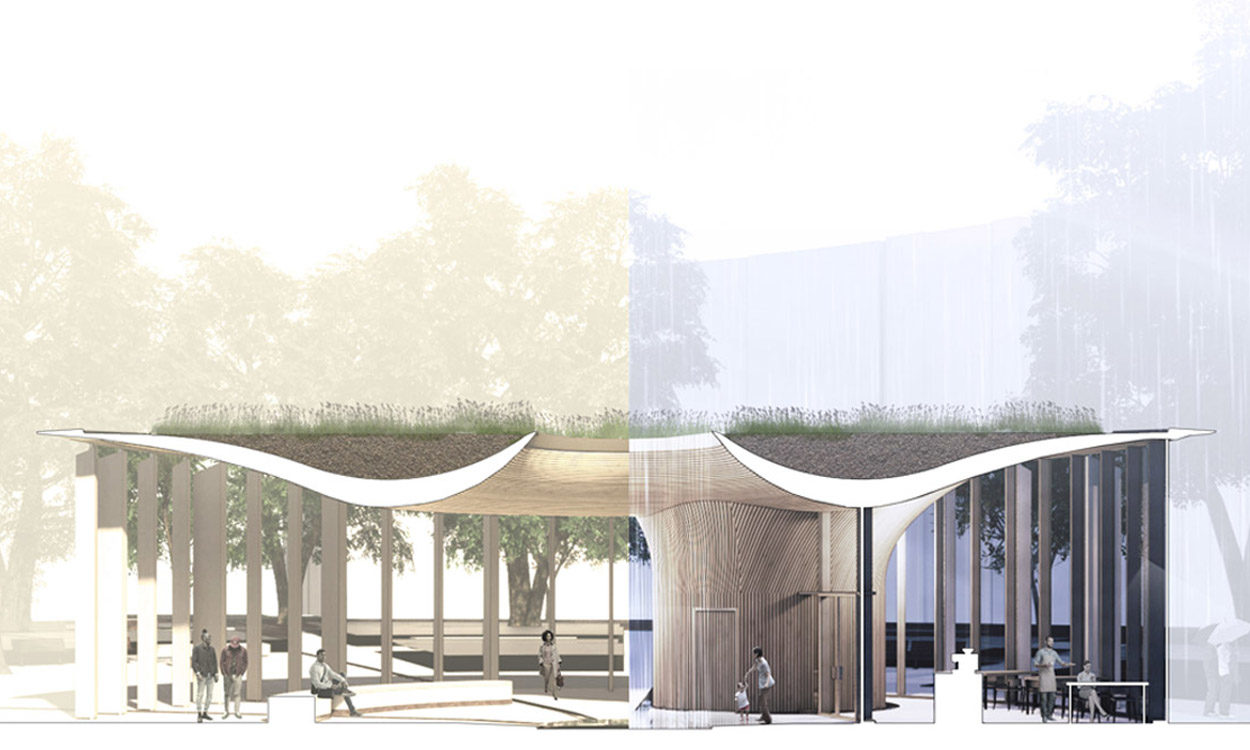
The importance of external public spaces
In a world defined by the continued challenges of climate change and disease control, public spaces such as Finsbury Circus have a critical role.
In collaboration with landscape architects Illman Young, Our approach to the enhancement and reinvigoration of Finsbury Circus Gardens is an integrated one: the proposed landscape and new pavilion are conceived as an inter-related whole. The design would build on the rich history of the site and our concept is heavily informed by water.
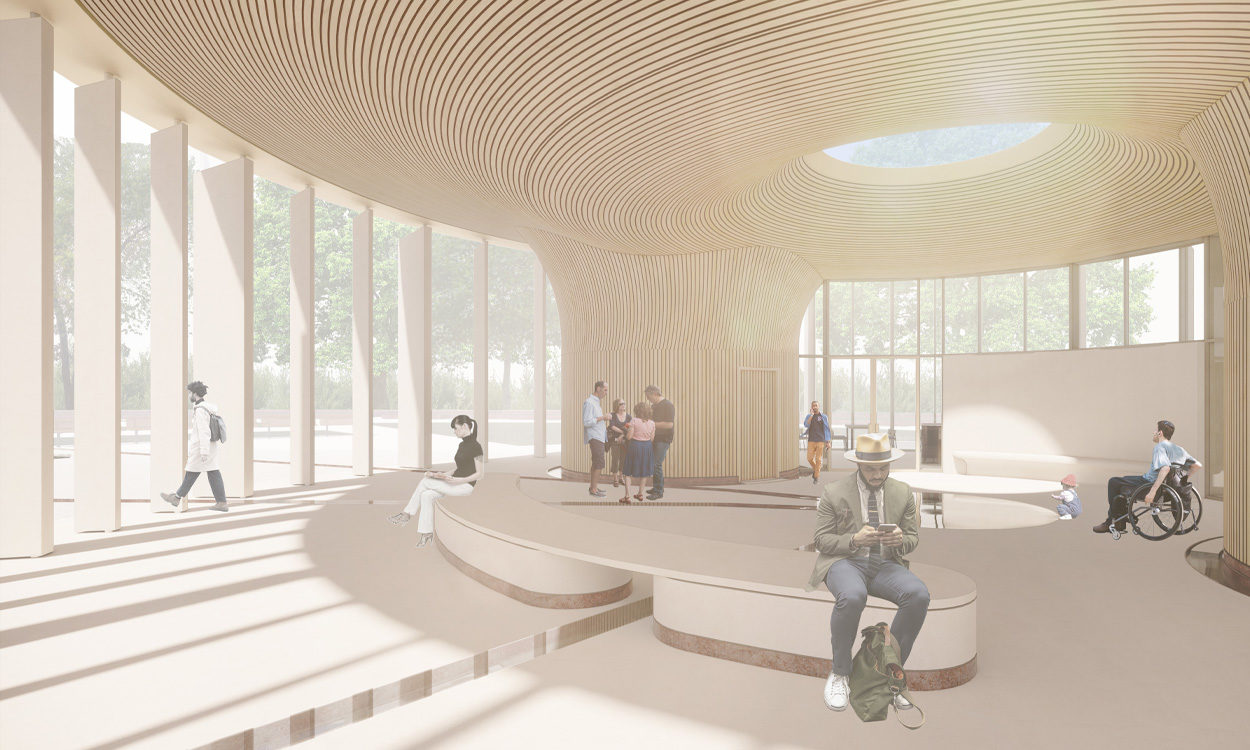
The height of the pavilion would relate to the Grand Order of the surrounding buildings. The cafe pavilion would be an extension of the landscape, conceived to track and respond to the sun. It would act as a cool spot on a scorching day and a warm haven with a wintergarden on a cool one. The use of perimeter Portland Stone fins, serving both a structural and sun-shading purpose, would visually embed the pavilion in its surroundings as well as express a contemporary architecture. The use of timber inside, both structurally and decoratively, would echo the fine trees within the gardens as well as being extremely low in embodied carbon.
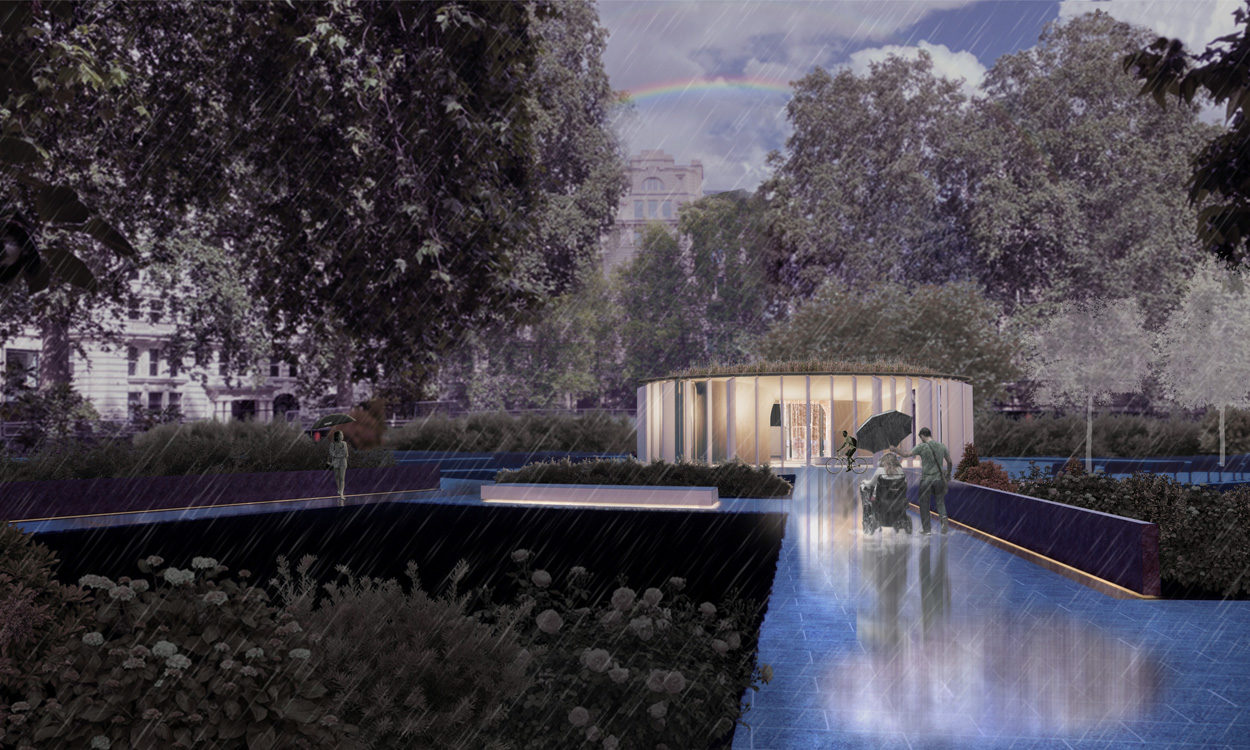
Water management
Water management is one of the key sustainability issues of our time. Integrating intelligent sustainable drainage systems and rainwater harvesting into the design of our urban gardens and buildings is key to tackling the climate emergency. We can provide flood management, conserve resources, and richly enhance biodiversity. As well as managing rainwater, we believe we can celebrate it. In a city associated with change able weather patterns, rainfall can be used to activate the pavilion and the surrounding landscape.
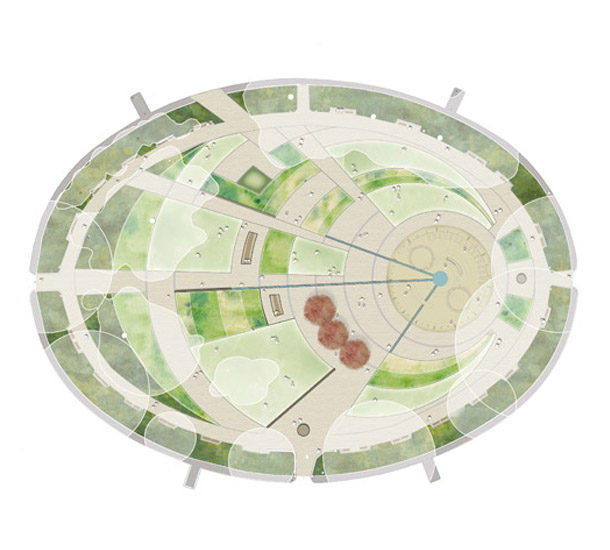
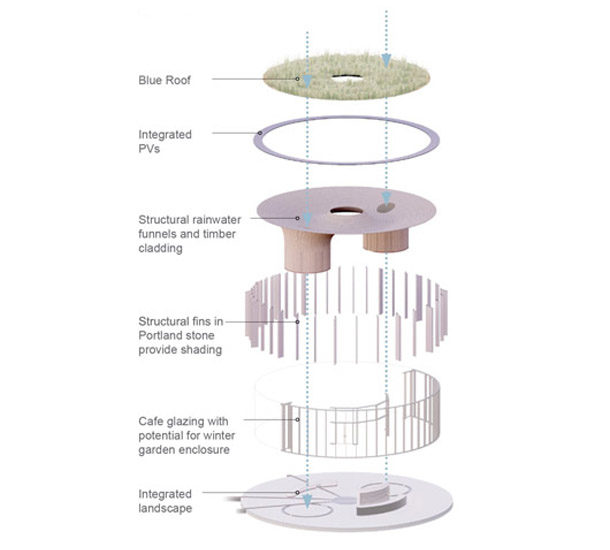
Masterplan and Landscaping
The gardens themselves, wrapped in a layer of trees, formal shrubberies and ornamental railings, would be focused on the pavilion and its central pool. Based on the idea of George Dance the Younger, that of an ‘oval amphitheatre’, we see the pavilion positioned at a key setting out point of the existing oval geometry; its location and circular form in harmony with the existing context.
The proposed landscape design, entwined with the geometry of the pavilion, would include areas of paving, grass and planting radiating out, allowing a transition from a new central open space to the more dense existing vegetation to the west as well as the classical oval circulation path. A generous terrace would be provided adjacent to the building, as a flexible multifunctional space for outdoor seating or larger events: the pavilion and cafe themselves would be flexible in function and size as well.
(Drawing courtesy of Illman Young Landscape Design)
The Impluvium
We imagine the pavilion organised around a central water pool, much as an ancient Roman villa would be organised around a courtyard with an ‘impluvium’.
On a warm day the pool supplements the stone floor’s ‘coolth’.
On a rainy day, the water from the pavilion’s blue roof activates the building and the landscape, tracking its way down the structural timber drainage funnels to be harvested for use within the cafe kitchen and WCs, or to spill at their base into the central pool.
Rills would connect the pool to new raingardens in the landscape. One of the rills would provide a permanent ornamental water feature to the gardens. The others would act as over-flow channels, filling up with movement as they drained the surface water in a sustainable manner.